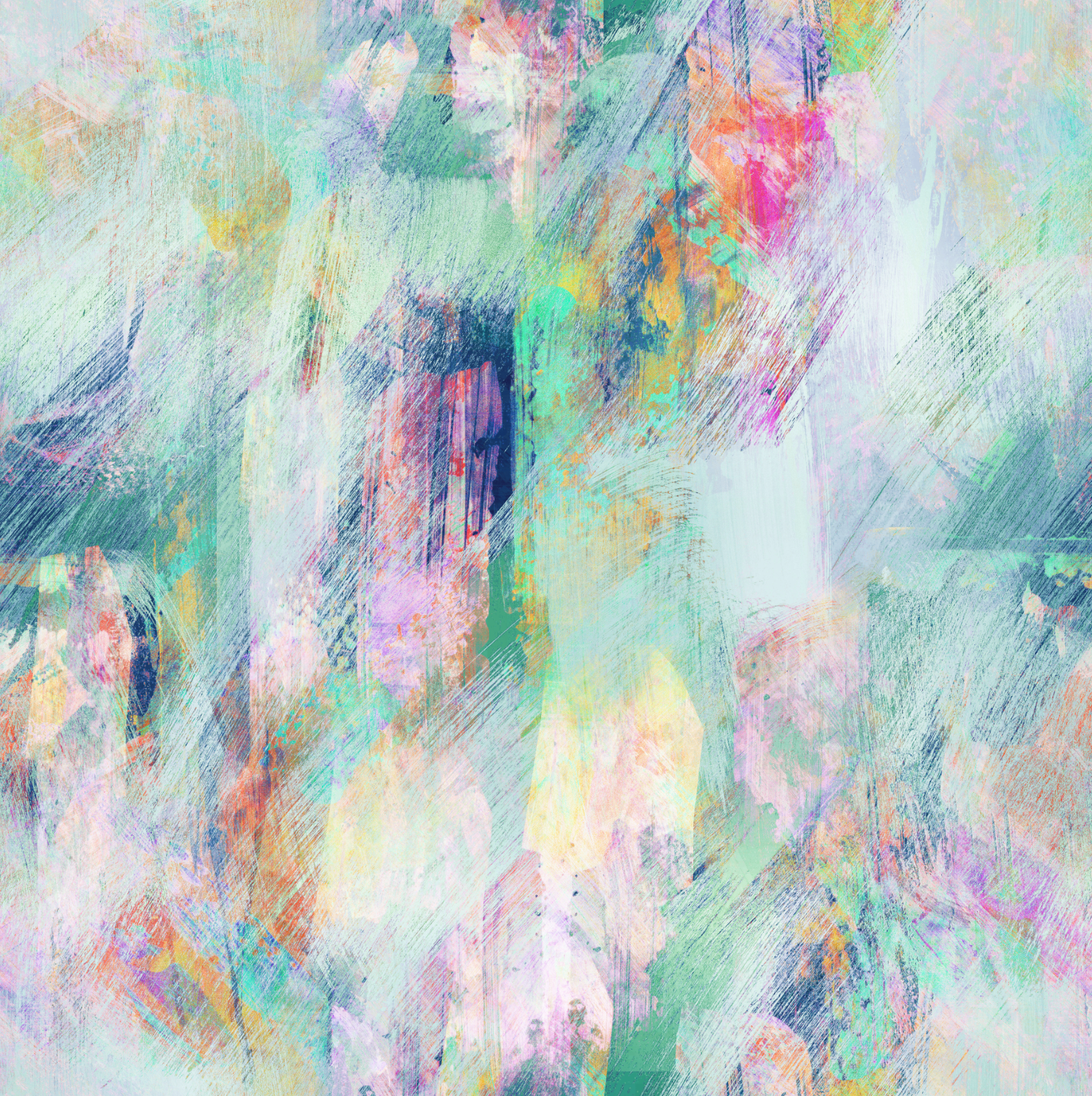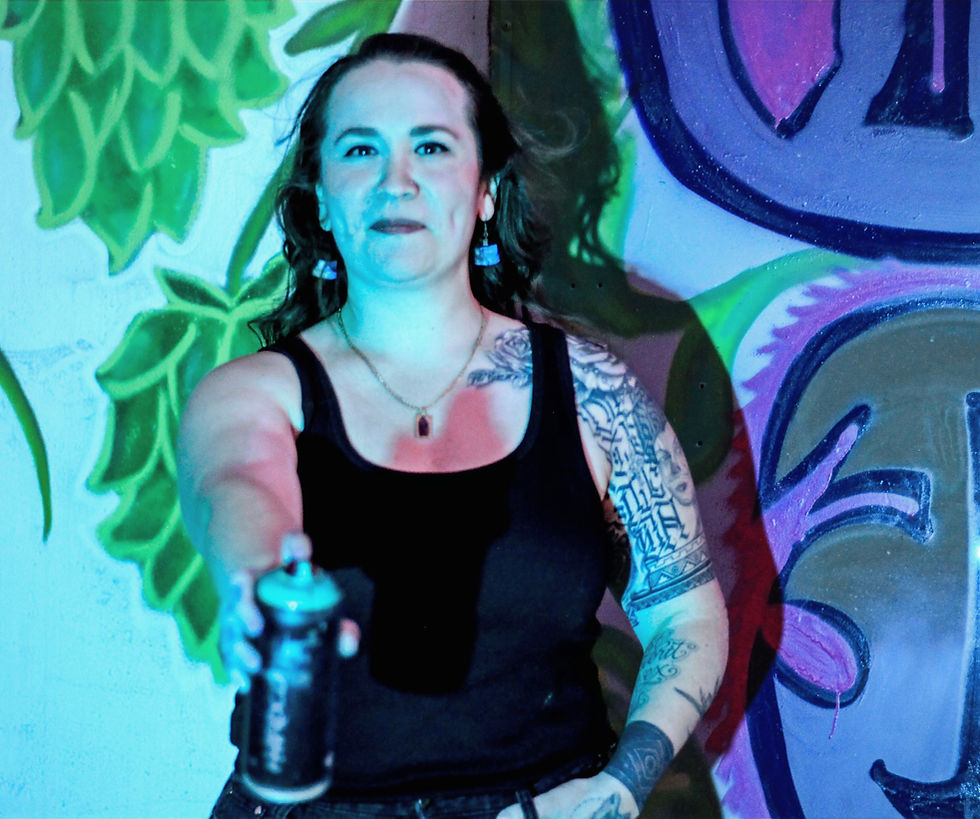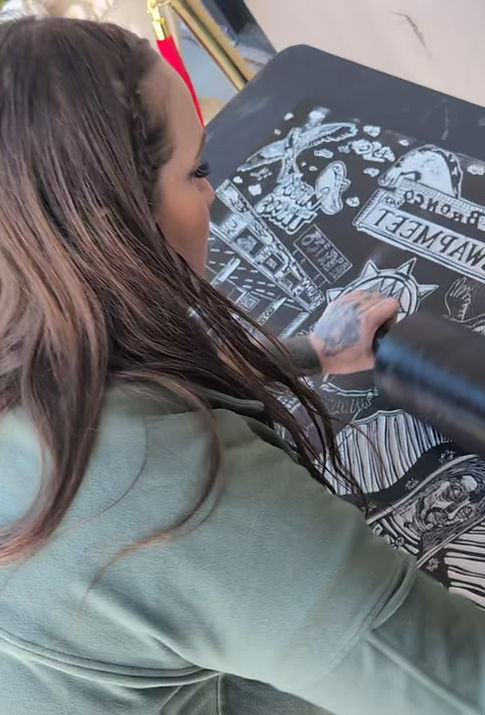
Meet Bear:
Artist, Printmaker,& Registrar

Art was always there, in sketchbooks tucked into backpacks, in doodles on napkins, in the quiet moments between school and home. Bear didn’t grow up thinking art would become the center of their world, but looking back, it feels inevitable. Drawing was second nature, something that just happened. But like many journeys, Bear’s path into the art world didn’t start in a straight line.
She began her studies at the University of Texas at El Paso as a music education major, chasing rhythm and melody. But something didn’t sit right. The structure felt off. The passion didn’t stick. It wasn’t until Bear switched over to art that everything started to fall into place. In studio classes and critiques, they met professors who helped unlock a different kind of voice, one that lived in linework, ink, and wood grain. Drawing and printmaking became more than just tools; they became the language Bear had been searching for.
As Bear grew into their craft, so did their understanding of identity, not just personal but communal and ancestral. Being Mexican and Indigenous isn’t just a background; it’s the root system from which their work grows. Their art explores that tension and beauty, weaving cultural symbols, personal narratives, and lived experiences into prints and mixed media that feel both ancient and immediate.
At the El Paso Museum of Art, Bear works among relics, sacred objects, devotional retablos, and images of saints and miracles. The quiet, work of cataloging over 1,000 of these artifacts isn’t just a job. It’s a spiritual and creative act. Each piece tells a story of survival, belief, and hope. These are stories that feel familiar in her community. “There’s sacrifice in all of it,” Bear says. “Just like in my family, just like in El Paso.” That reflection finds its way into their art, becoming visual prayers carved into linoleum, sprayed on concrete walls, or stitched into dreamcatchers.
Of all the mediums Bear works in, relief printmaking is the one that feels most honest. It demands precision, patience, and trust. “There’s no undo button,” they explain. “Every mark is final. Every choice counts.” In a world that often feels rushed and disposable, printmaking offers a slower rhythm. A kind of truth telling that doesn’t allow shortcuts.
Their artistic persona, Bear, started as a nickname. A gift from their grandfather, who called them “Little Bear” when they were young. Later, it became a kind of social experiment. What happens when the artist’s name doesn’t signal gender? Submitting work under “Bear” led to more exhibition acceptances. More doors opened. It was both validating and revealing.
Then came “Osita,” the softer, more playful evolution of Bear. It’s Spanish for “little bear,” this time feminine, more intimate. The first time Bear painted the word “Osita” was under a bridge in Santa Fe during a Juarez paint jam. It was part tribute, part reclamation, and part creative exploration. “Osita just felt right,” she says. “And honestly, those letters are fun to decorate.”
There wasn’t one single breakthrough moment that defined Bear’s journey. Instead, it was a series of quiet revelations and loud affirmations. Community has always played a central role: friends, professors, artists, and elders whose guidance made the path clearer. One recent encounter left a lasting impact. Meeting Judithe Hernandez, a legendary Chicana artist, helped Bear realize there was space for them in the art world, even if they didn’t fit the usual mold. “She made me believe I didn’t have to change my voice. That even cholo imagery, even unconventional femininity, had value.”
For Bear, art isn’t just self expression. It’s community memory, spiritual work, and cultural preservation. It’s about carving stories into permanence and reminding others that their voices matter too.
Bear shared how to properly spray the can to graffiti after her interview. It was a fun time and I wanted to share this clip. Thank you so much to Bear who let me tell her story as an artist and registrar.



